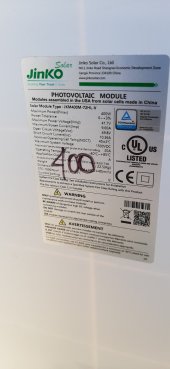HPaulPayne
New Member
- Joined
- Jun 8, 2021
- Messages
- 19
I have 30 400w panels and am building a 48v off-grid system for my house.
My problem, as well as the related questions, revolve around the fact that the house is about 1,000 feet (of buried underground wire) from the location of the panels!
What is the best way to get the power from the panels - to the house?
Should I install the inverters (2 Sol Ark 15k are planned) and large battery bank in the nearby shop? Or, should I run the power from the panels to the house and put the batteries and inverters there?
I have no idea what kind of wire, or sizes, would be required for each option.
Thank you for any input you can provide to me.
Paul
My problem, as well as the related questions, revolve around the fact that the house is about 1,000 feet (of buried underground wire) from the location of the panels!
What is the best way to get the power from the panels - to the house?
Should I install the inverters (2 Sol Ark 15k are planned) and large battery bank in the nearby shop? Or, should I run the power from the panels to the house and put the batteries and inverters there?
I have no idea what kind of wire, or sizes, would be required for each option.
Thank you for any input you can provide to me.
Paul




